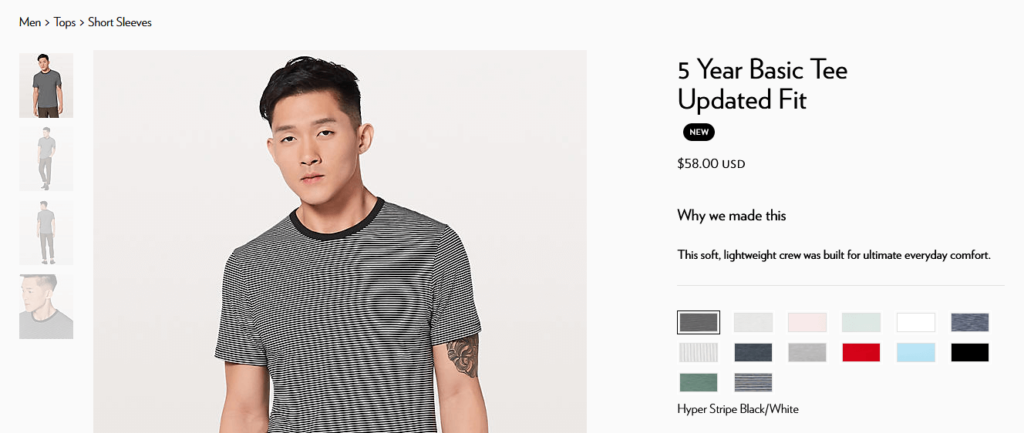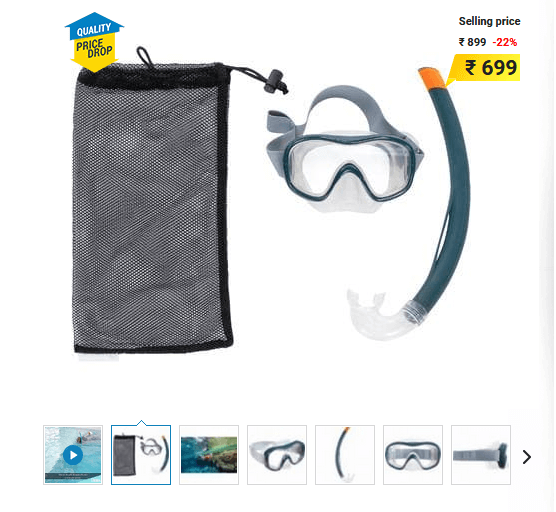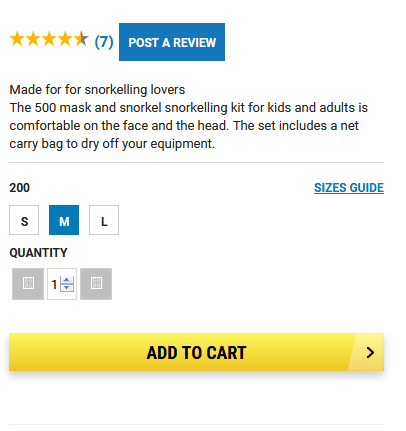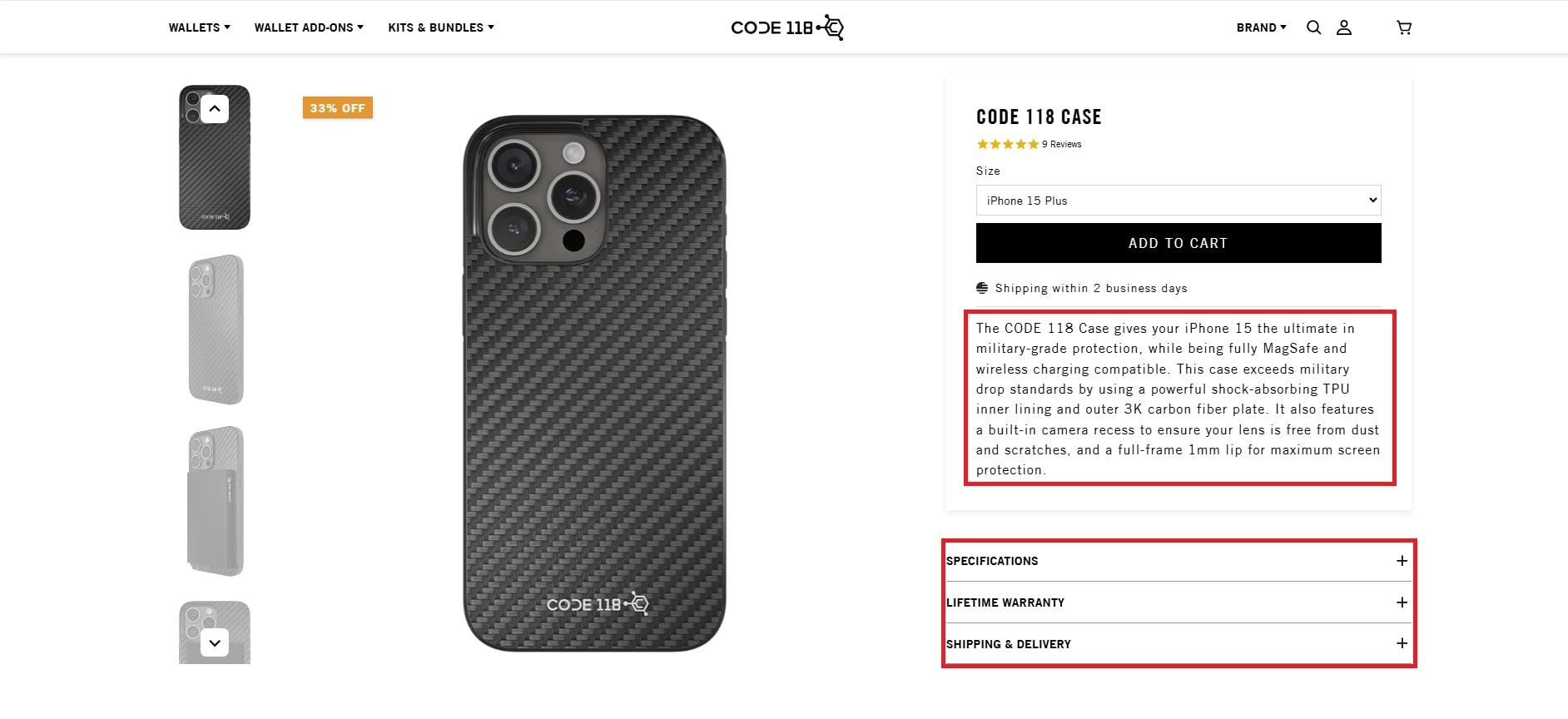
Are you an ecommerce business owner? Are your product descriptions persuasive enough?
Do your product descriptions transform visitors into consumers? Or do they just offer information about your products?
The biggest and most common blunder most copywriters often make is describing services or products rather than selling those with descriptions to their target audience.
So, can you really sell your product or service through description? Well, of course you can. What you should do is create compelling, attractive and persuasive descriptions for the items you sell.
In Ecommerce Marketing, product descriptions is one of the core factors along with product images & call to action. It is way more important than you think, in terms of SEO, conversions, and customers. Today, I will discuss here five effective ways to write product descriptions that can actually sell your products. But before diving into that, let’s talk about first what actually a product description is and what fundamentals are behind it.
The Basics of Product Descriptions
According to Business Dictionary, product descriptions define as –
“Consumer’s view of a product that includes its benefits, form, presentation, price, purpose, etc.”
An ecommerce store is considered as a virtual place where consumers cannot touch or feel a product. If a consumer goes to a brick and mortar store and has any question about a particular product’s features, there are salesmen who can assist that consumer. But when it comes to ecommerce store, your savior can only be the product description. It is the most important factor when it comes to making people buy your product. A bad product description potentially turns a visitor away from being a customer.
Let’s have a look what makes a product description good and bad.
What is the difference between a Good Product Description and a Poor Product Description?
Do you always need to be fancy to make a product description “good”? Well, of course not. As long as it explains what actually your product is and why somebody should buy it, it will be good to go. The most important factor is that a product description should be self-explanatory. It should be a casual tone.
A good product description contains all the information related to the product such as the material used, USP, uses, ideal for whom?, etc. It will be very well explained and in simple and casual language.
I’ve seen many Ecommerce stores has poorly written product descriptions that miss the necessary information such as, the material used, the product USP, and why it is a good choice.
Just have a look at this product description by Lululemon .

After reading this one-liner product description, anybody can understand what this product is and who it is for. Though it has not gone into too much of detail, it surely explains that the product is a “soft lightweight crew” and it is for those who want comfortable clothes to use every day. Usually, the selling factors of this kind of clothes are image quality (which seems good here), price, available colors, and sizes. All of these things are present here. So the text here is less important.
Even though it is not a detailed copy, it is a good product description.
Now let’s have a look at another product.

Can you understand everything about this product by just looking at it? You could probably guess. So, here’s have a look at its description.

Also, there are separate sections, describing advantage, technical information, features, technology and storing tips in detail about this product on its respective page.
This company has done a great job by writing a product description that clearly explains what the product does, how it adds benefits and other relevant information.
Both of the above product descriptions have achieved the same goal, giving consumers what they seek information about – nothing more, nothing less.
Now, it’s your turn. Let me give you an example from Code Wallets.

Read this product description and let me know in the comments whether it is a good product description or a poor one, and why.
On the other hand, a bad product description does exactly opposite of that. If a consumer still has questions and confusions about a product even after going through its description, then my friend, it is surely a bad product description. Hope, you will not like to develop a bad description for your product.
Here are 10 surefire ways that will increase your ecommerce business conversion without any doubt.
1. Have a Defined Buyer Persona
The roadmap for creating a good product description starts with defining the right buyer persona. When you sell a product, be it online or offline, you must keep your buyers in mind. Especially for online businesses, giving importance to buyer persona is one of the most crucial selling strategies.
Firstly, you need to have complete clarity about your customers; whether they are buying for themselves or somebody else, or for any wholesale purpose. You need to determine who is this product for. Who will be most interested in buying this product? To know that you need to list out few things, such as –
- Demographic
- Gender
- Age
- Interest
- Level of education or income
- Language
- Behavior
- profession (where applicable)
Other than describing what this handwash contains and its additional features, Method explains that the product can make a user’s hand clean, soft and supple in a biodegradable way. And that is what any customer will be interested on.
2. Explain the Features of a Product along with the Advantages of Buying It (USP)
Why someone should choose your product? What’s unique about your product? These questions you should always keep in mind when writing the product description.
When you manufacture or sell a product, you focus on its features and want to grab the attention of your customers by highlighting those features. But is highlighting a product’s features enough to grab a potential buyer’s attention? The answer is a big resounding No. The way you get excited about your product specifications, a buyer may not feel the same. Always a buyer sees in a product how that benefits him or her. Thus besides explaining a product’s specifications, you need to explain how each specification can benefit the customers similar to I said earlier.
Method has done the exact same thing with its product, let’s have a look at one of their hand wash products.


Other than describing what this handwash contains and its additional features, method explain that the product can make a user’s hand clean, soft and supple in a biodegradable way. And that is why any customer will have interest on.
So, develop a product description in such a way that tells all your customers how the product can make them happy. The more you will touch the personal chord of your audience through your product, the better ROI you can achieve.
3. Maintain the Readability of your Product Description
In today’s age, there are only a few people who read everything they find online. Rest try to find the most important details first. So, to make your product description easier to read or rather say scannable, integrate bullet points in it. They deliver a clear and concise way to showcase the most important information. Few things you can consider:
- Try bullet points where it’s required (just like I did here
)
- Write in short paragraphs and keep sentences short
- Use simple language
- Focus on personalization (simply call your audience “you” and “your”)
- Casual language
Here is a great product description that uses bullet points to highlight features.

4. Utilize the Power of Superlatives & Influential Words
Using influential words, such as superlatives, adjectives etc. can make your product description convert.
Do you know what these influential words are? Kevan Lee in one of his pdupliosts shared the ultimate list of words and phrases that convert, which includes words like suddenly, sensational, now, remarkable and many more. But including such words without justifying them may seem insincere to your audience.
If your product is really the most advanced or the best, give particular proof why this is the scenario. Otherwise, tone your copy down or share your customer reviews that include your product is the most wonderful they have ever used.
5. Craft Your Copy for SEO
It is crucial that you use your keyword contextually in the product description. But, most people misuse this advice. They add keywords forcefully. No, that’s not how it works.
Most of the time the good product description has keywords inserted in it. But what makes a good product description and optimized for SEO. When you use your keywords contextually. I REPEAT, NOT FORCEFULLY!!!
In addition, just make sure there shouldn’t be any duplicate content for the product.
If you hire any content writer then guide them to use proper content and don’t copy from elsewhere.
The words you use in a copy are not only for swaying your audience but also for optimizing the entire description for search engines. However, if you have already created your buyer persona and written product descriptions focusing on that, using specific words and phrases that your buyer persona uses, then you have already optimized your product descriptions for search engines.
Furthermore, let me share some quick tips that will help you make your product copy more search-engine friendly.
- Avoid using jargons unless your audience uses them
- Do proper keyword research using various tools
- Use long tail keywords, or rather say key phrases, in headline, subheading, and body text.
- Use Alt tag to optimize the product images
Remember, write your product descriptions keeping your readers in mind and optimize it for search engines.
6. Keep your Tone/Voice consistent
The tone is the branding of your eCommerce store. When a visitor comes to your store, they expect a welcoming tone. The tone establishes a connection between the visitor and you. The tone is not a particular voice defining your brand. It can be humorous, emotional, or edgy. But, in all, it should connect you with the visitor in a friendly way. The tone in your eCommerce product description gives the potential customer a reason to stick to your site.
7. Use high-quality Images
Images are the prime representation of your product. Your customers expect high-quality images for buying the product. The high-quality images bring credibility to your product. They will show all the key features of your product to the customer. They will also influence the buyer to imagine the use of the product in their life.
Good images increase the chances of users buying the product. Brands use high-definition pictures and videos to show the features of their product. Hence, opting for a visual way to showcase their product’s features.
Example: I can’t deny the fact that I still remember the eye-catching images of the MacBook Pro. When I visited Apple’s product page for the MacBook Pro, it captured my attention, and I still remember it. They have done a great job creating the product pages. It is the best example to show you here.

9. Leverage Storytelling
Stories can do wonders with the sales of your products. Adding mini-stories makes an emotional connection with the visitor. The story can be about the benefit of
your product, a story about a previous customer’s experience with using your product, or a story about the makers of the product. These stories draw your customer in and increase the chances of generating qualified leads.
10. Do’s and Don’ts to write a good product description
A product description for an eCommerce website is a deciding factor in making or breaking a sale. To write an epic product description, follow the following tips:
· Personalization: Write the product description as if you are talking to the customer in real life. This creates a personal connection between the customer and you.
· Use superlatives: Boast about your product’s awards and 5-star reviews. Use superlative adjectives like top-rated, trustworthy, or award-winning.
· Focus on readability: The higher the readability score is, the more people it reaches. Hence, keep the readability score in check.
· Don’t use unjustified superlatives: False promises decrease the brand credibility. Do not use adjectives that are false or with no proof.
· Don’t use insignificant verbs: Avoid using insignificant and repetitive verbs like excellent or cutting-edge. They do not add value to the customer.
· Do not use jargon: Jargons always deplete the customer’s attention. When you use jargon in the product description for eCommerce websites may confuse the customer. This can result in putting off the customer.
· Don’t use copied content: The copied content affects the search engine ranking of your brand. It doesn’t add value to your customer.
Conclusion
A product description either make or break conversion of ecommerce business. Thus taking care of every minute detail of making a great product description is highly needed. Make sure that the product descriptions have been written for your buyer persona in a scannable format utilizing the apt tone. And don’t avoid optimizing them for search engines.
So, is there any ecommerce challenge you have faced while developing product description? Do share if any. If there is any secret of writing awesome product description you want to reveal, share it in the comment section. We’d love to know.
Contact Form Popup
Boost Your Business Now
This will close in 0 seconds
apply now popup
Apply Now
This will close in 0 seconds
Get free audit popup
Get Free Google Ads Account Audit Worth $999
This will close in 0 seconds
Contact page Form Popup
Contact Us
This will close in 0 seconds

